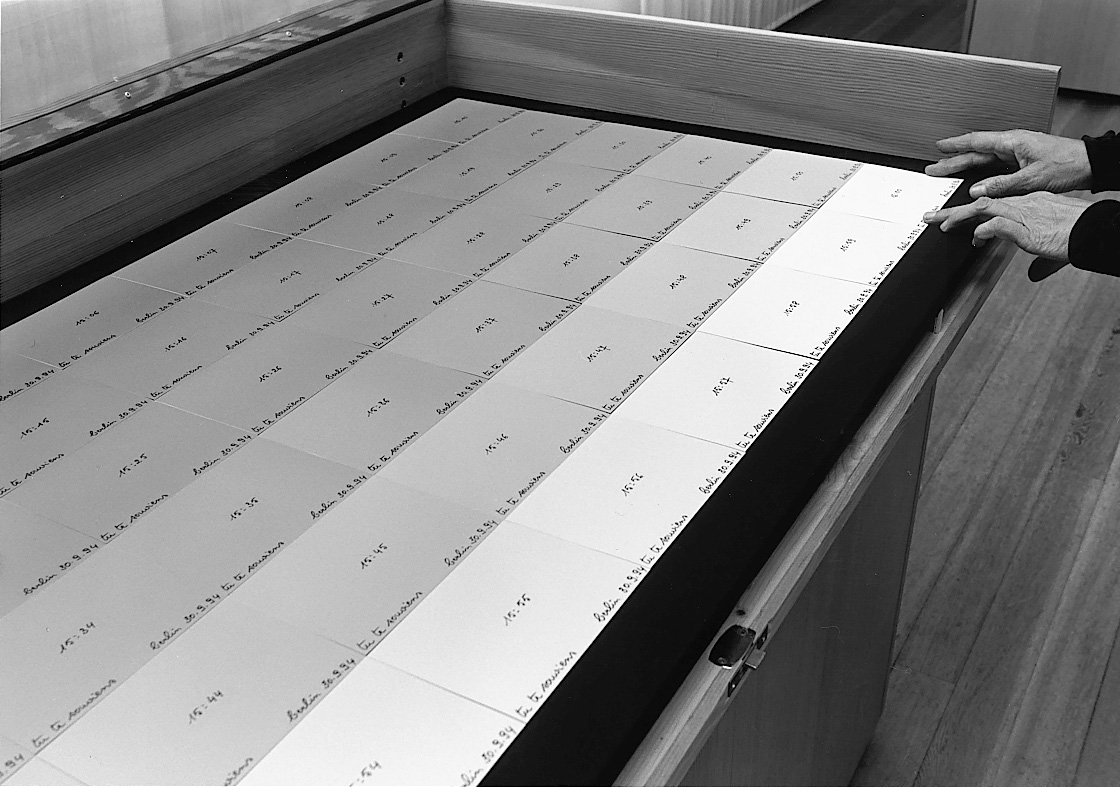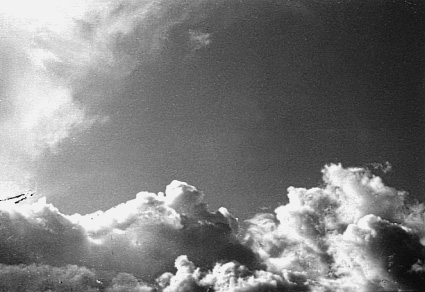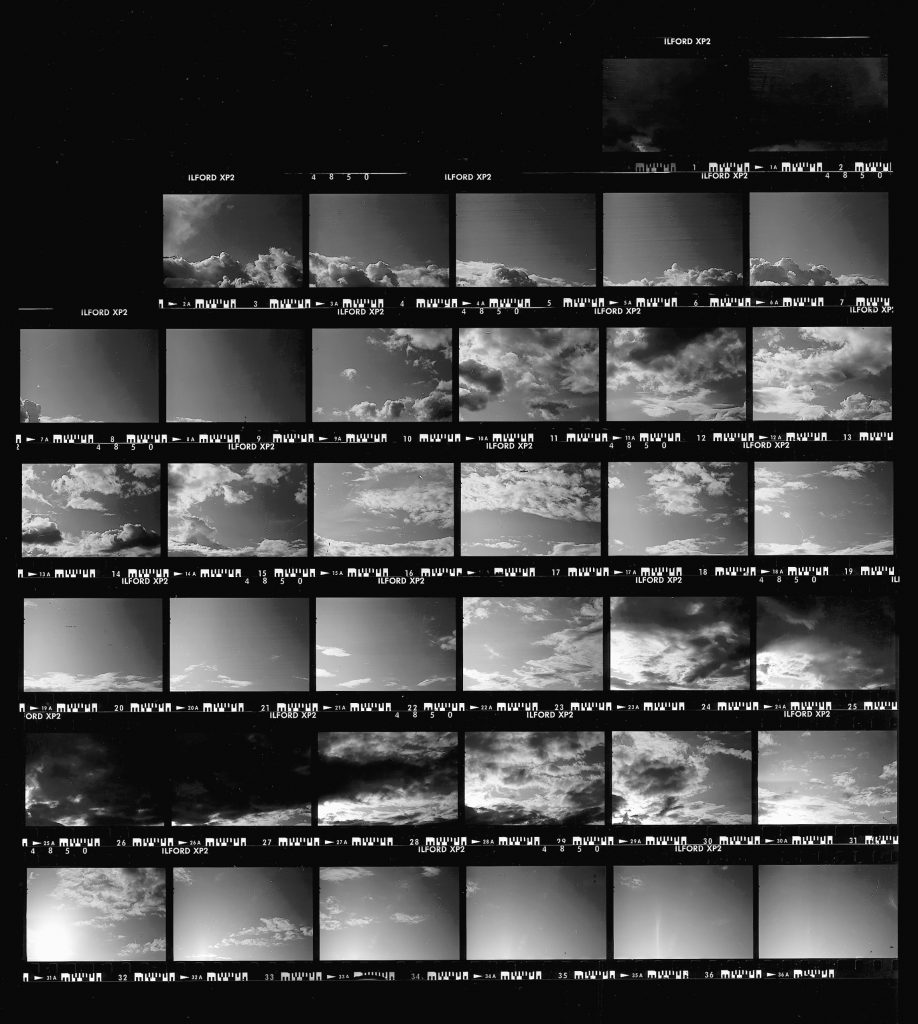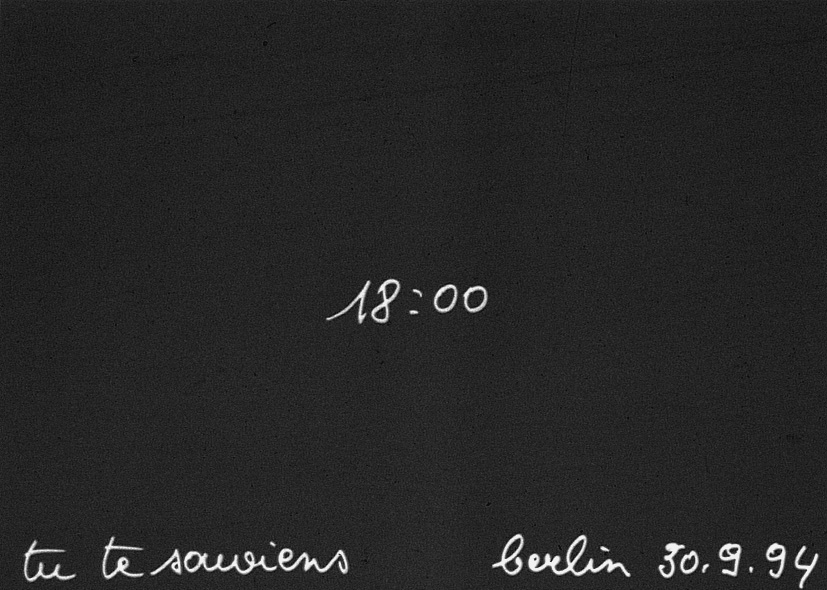time sculpture
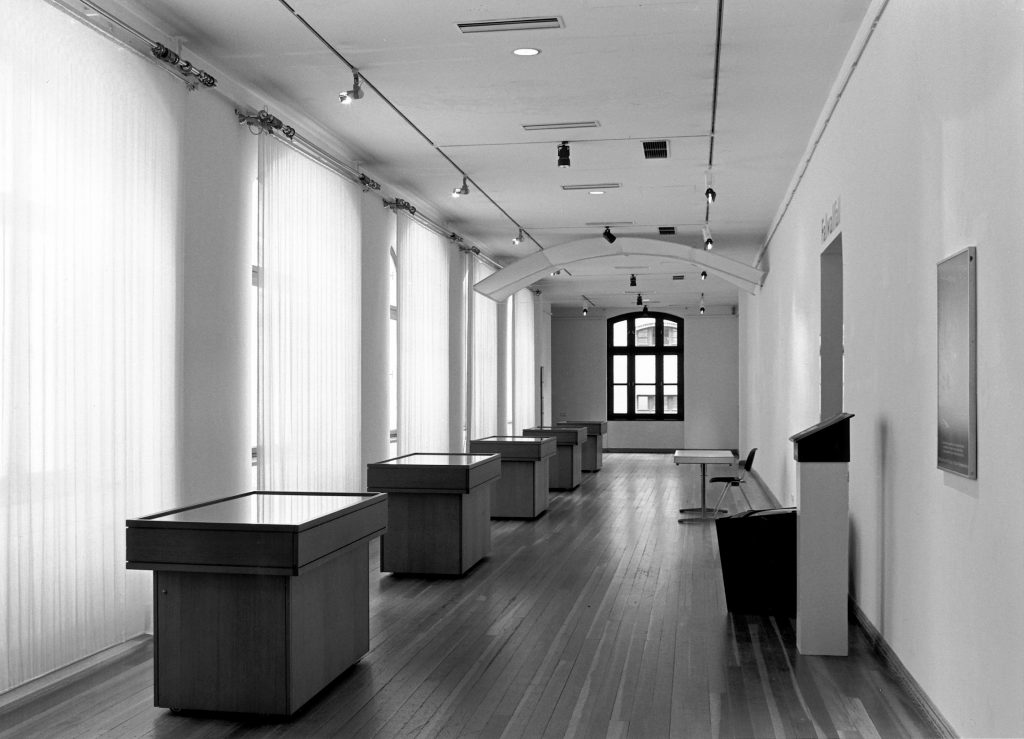
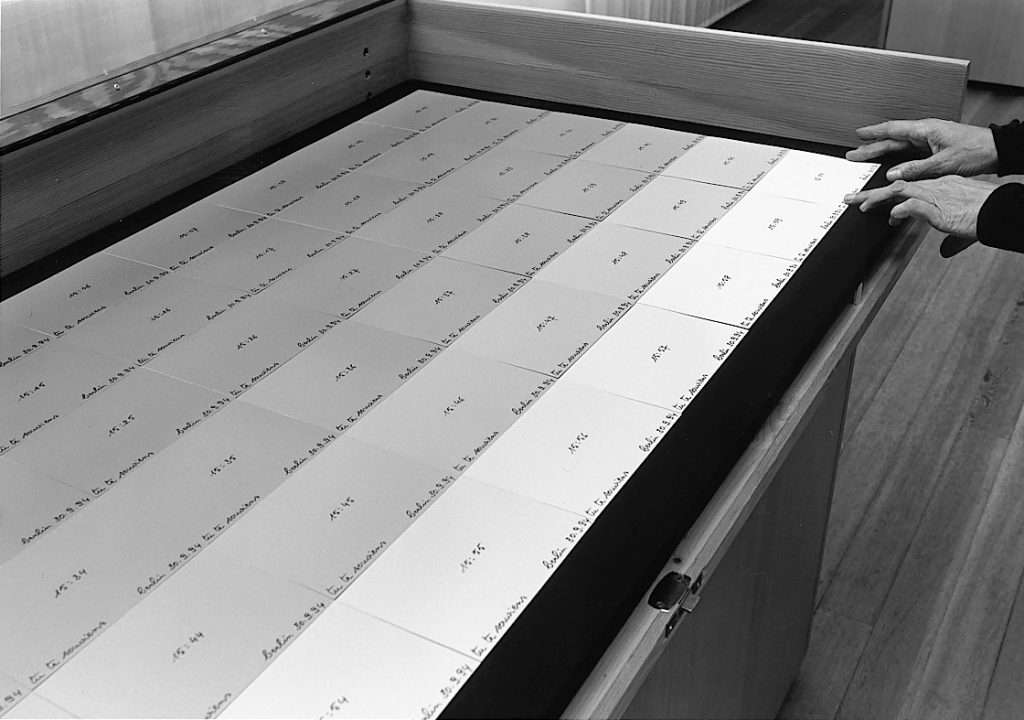
Martin Gropiusbau Berlin 1994
installation display cases / photographic paper / natural light
In a corridor of the Martin Gropiusbau 5 museum display cases were placed. Every minute, for five hours during an afternoon, a sheet of unexposed photographic paper was dated and then put it in the glass display cases. These time notations remained there until evening, free to the further processes of exposure.
When later the sheets were collected, those from the early hours were darkened, while those exposed to late evening light had hardly undergone any development.
Time was visible.
Angelika Stepken
– augen blenden – 1998
published in “de passage monique thomaes” vice versa verlag berlin 1998
translation by John Epstein
time sculpture
… repeat: Any cognition requires time, also when standing before an immovable sculpture. However in this case time is that time which the observers needs, takes, in order to establish a relation to the visible. Time, or perception, before a sculpture is latently open-ended because it establishes a kind of dialogue situation with space. The time of technical picture media is dictated. The observer follows – even if the work in question is of an “interactive” nature – the time, tempo, and rhythm of the apparatus. Before Monique Thomaes began working with the video camera’s moving picture, she observed in several experimental situations the phenomenon of light in time, as, for example, in the case of photographic direct exposures. Her studio, then in “Künstlerhof Buch“, became transformed into a camera obscura. Thomaes spread out photographic paper on the floor and observed the etchings which light created during different times of day and under various weather conditions. For her 1994 exhibition in “Martin-Gropius-Bau”, she dated, every minute for five hours in the afternoon, a leaf of unexposed photographic paper and then displayed it in one of five glass display cases. These time-notations remained there until evening, free to the further processes of exposure. When Thomaes later collected the sheets, those from the early hours were darkened, that is shadowed-over by light, while those exposed to late evening light had hardly undergone any development.


